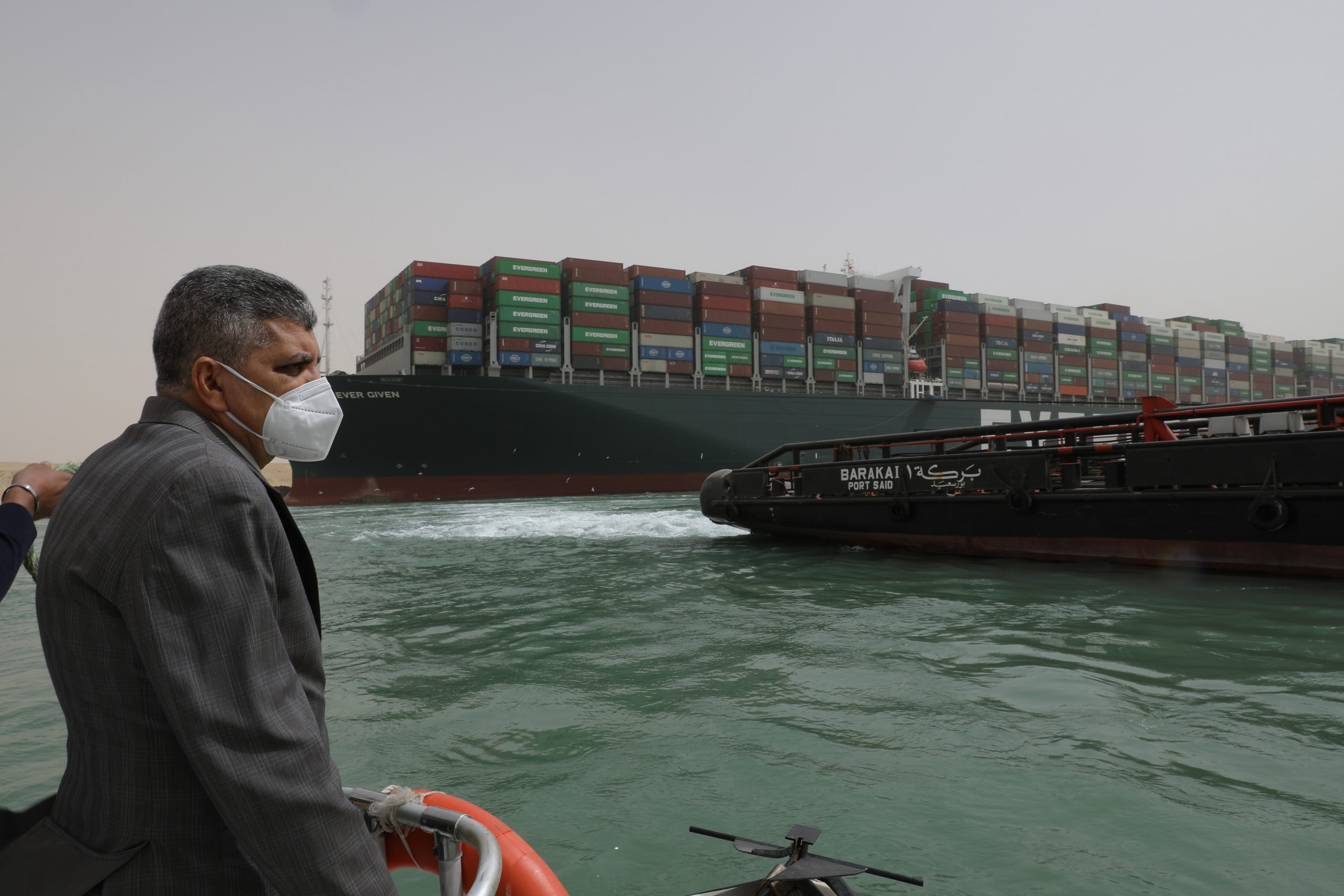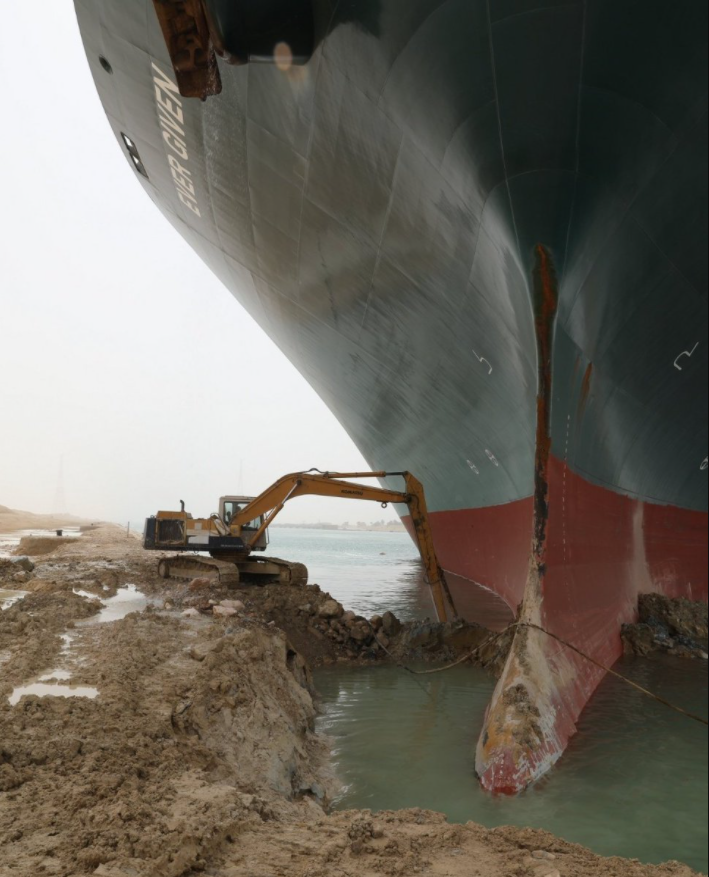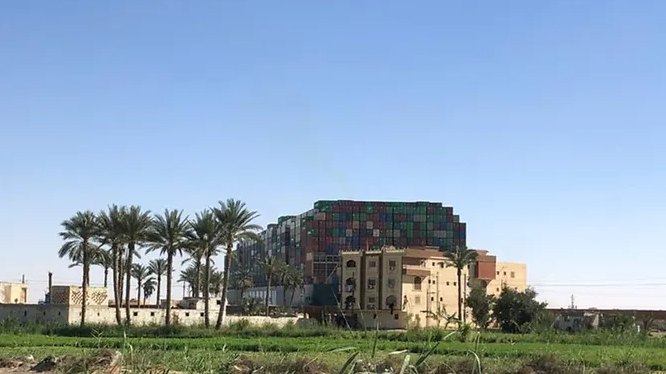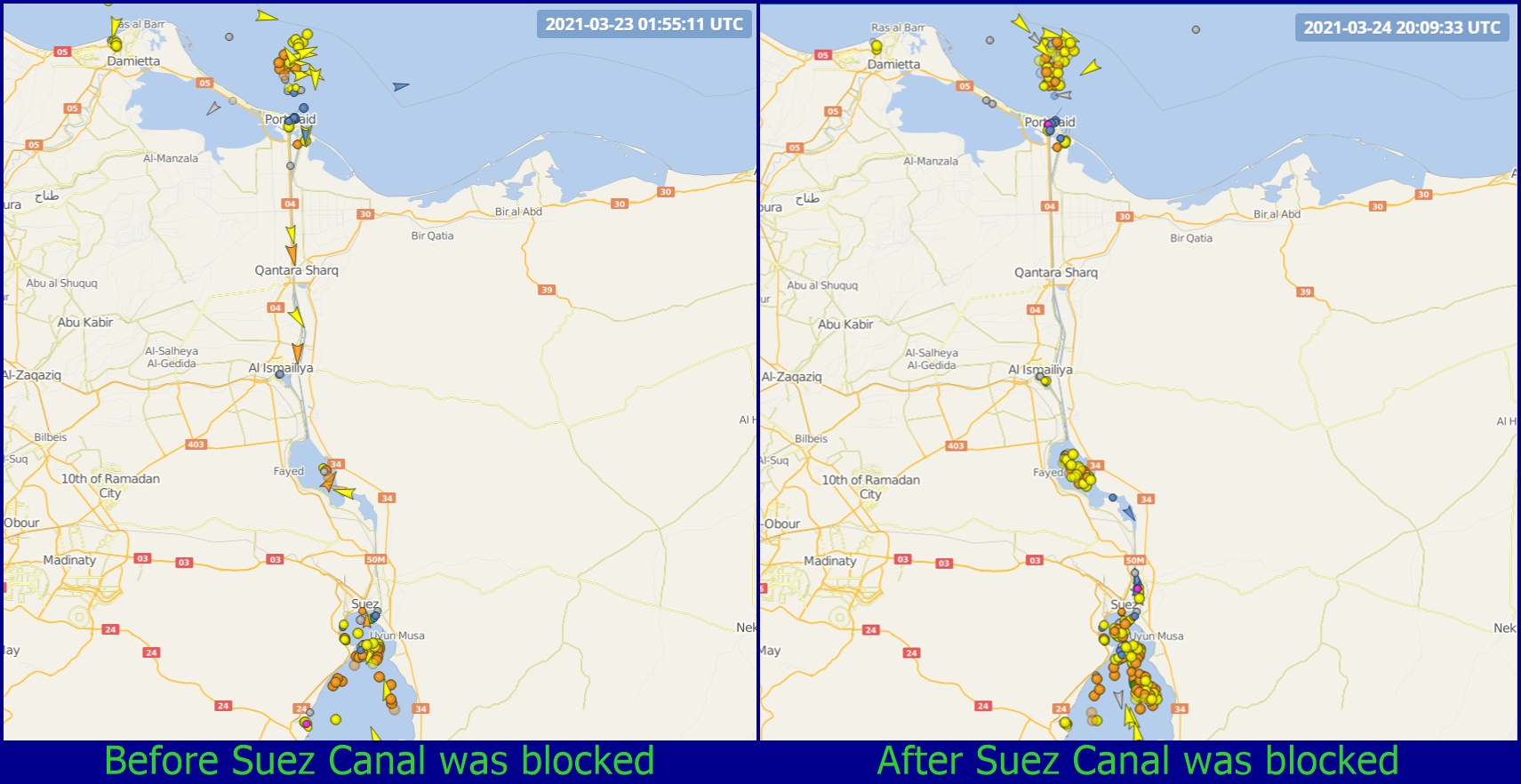The Suez Canal remains blocked to vessels in both directions as the ultra-large container vessel (ULCV), the Ever Given, is still stranded in the waterway despite efforts to refloat it.
Lieutenant general Osama Rabie, chairman of the Suez Canal Authority (SCA), has announced that navigation of the canal is suspended on Thursday, March 25 until the 200,000-tonne vessel Ever Given is floated again.
After attempts to refloat the vessel on Wednesday evening failed, two dredgers continued to dredge throughout the night.
The operations to float the ship included tension and propulsion methods with eight large locomotives at the forefront of the Baraka 1 tugboat with a tensile strength of 160 tonnes.



The incident continues to create long tailbacks on the waterway, stopping vessels from passing and causing delays, with more than 100 ships waiting to transit the canal.
There are 14 gas carriers (LNG and LPG tankers) stuck south from the Suez Canal behind the marooned Ever Given and another 7 carriers from the north, and there are already signs the blockage is beginning to disrupt global gas flows.
Around 8% of the global supply of fuel passes through the vital waterway, and the only other option is a trip around Africa that would add 2 weeks more to the journey.
Still, most traders are betting that the issue will be resolved within a few days, and delays have had only a minimal impact on prices. While the closure could postpone shipments and curb some supply, end-users are sitting on enough inventories to be able to weather a short-term disruption. And a shift to milder spring temperatures in Europe and Asia means heating demand has ebbed.
So far, seven Maersk container vessels have been affected; four of which currently within the canal system while the rest are waiting to enter the passage.

On Wednesday, 13 ships crossed the canal from Port Said within the northern convoy.
Speaking to a Dutch television station, Peter Berdowski, CEO of Dutch dredging company Boskalis, which is participating in the rescue efforts, said it was too early to estimate when the vessel is refloated, according to Reuters.
Noting that the ship’s bow and stern had been lifted up against either side of the canal, he added: “We can’t exclude it might take weeks, depending on the situation.”
Berdowski stated: “It is like an enormous beached whale. It’s an enormous weight on the sand. We might have to work with a combination of reducing the weight by removing containers, oil and water from the ship, tugboats and dredging of sand.”
Japanese ship-leasing firm Shoei Kisen Kaisha said it owned the giant vessel and was facing "extreme difficulty" trying to refloat it.
"In co-operation with local authorities and Bernhard Schulte Shipmanagement, a vessel management company, we are trying to refloat (the ship), but we are facing extreme difficulty," Shoei Kisen Kaisha said in a statement on its website.
"We sincerely apologise for causing a great deal of worry to ships in the Suez Canal and those planning to go through the canal."
As shipping specialists warned it could take days or even weeks to budge the vessel, the Suez Canal Authority announced it was "temporarily suspending navigation".
Broker Braemar warned that if tug boats are unable to move the giant vessel, some of its cargo might have to be removed by crane barge to refloat it.
"This can take days, maybe weeks," it said.
Historic sections of the canal were reopened in a bid to ease the bottleneck, with dozens of ships waiting at both ends of the waterway.
The waterway drastically shortens travel between Asia and Europe because it prevents vessels from having to navigate around southern Africa's Cape of Good Hope.
The Singapore-to-Rotterdam route, for example, is 8,400 nautical miles through the Suez Canal and up to two weeks shorter than going around Africa, which is 3,400 nm longer.
It is an "absolutely critical" route because "all traffic arriving from Asia goes through the Suez Canal," said Camille Egloff, a maritime transport specialist at Boston Consulting Group.
Nearly 19,000 ships passed through the canal last year carrying more than one billion tonnes of cargo, according to the SCA.
Egypt earned $5.61 billion in revenues from the canal in 2020.
Related news:
- Suez Canal Reopens for traffic after Ever Given was Refloated
- “Challenge still ahead” to free container ship EVER GIVEN in Suez Canal
- Ever Given ship Successfully Refloated in Suez Canal, Video shows her floating
- UPDATE 8 on Ever Given - High tide offers Best chance of moving Ever Given tonight
- UPDATE7: Japanese owner Shoei Kisen of stranded Suez Canal ship aims to free vessel on Saturday
- UPDATE 6 on Suez Canal Blocked by Ever Given - Refloating attepts continue
- UPDATE 5 on Suez Canal Blocked by Ever Given - Steps to free the Ever Given?
- UPDATE 3 on Suez Canal Blocked by Ever Given - Photos and Videos
- UPDATE 2: Suez Canal Blocked by Huge container ship; Video simulation of the controversial track
- UPDATE 1: Suez Canal Blocked by Huge container ship; The first attempt to refloat the vessel - unsuccessful
- Suez Canal Blocked by Huge container ship Ever Given